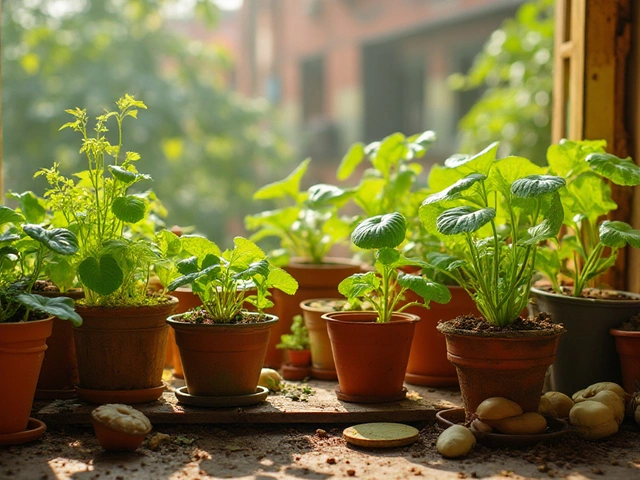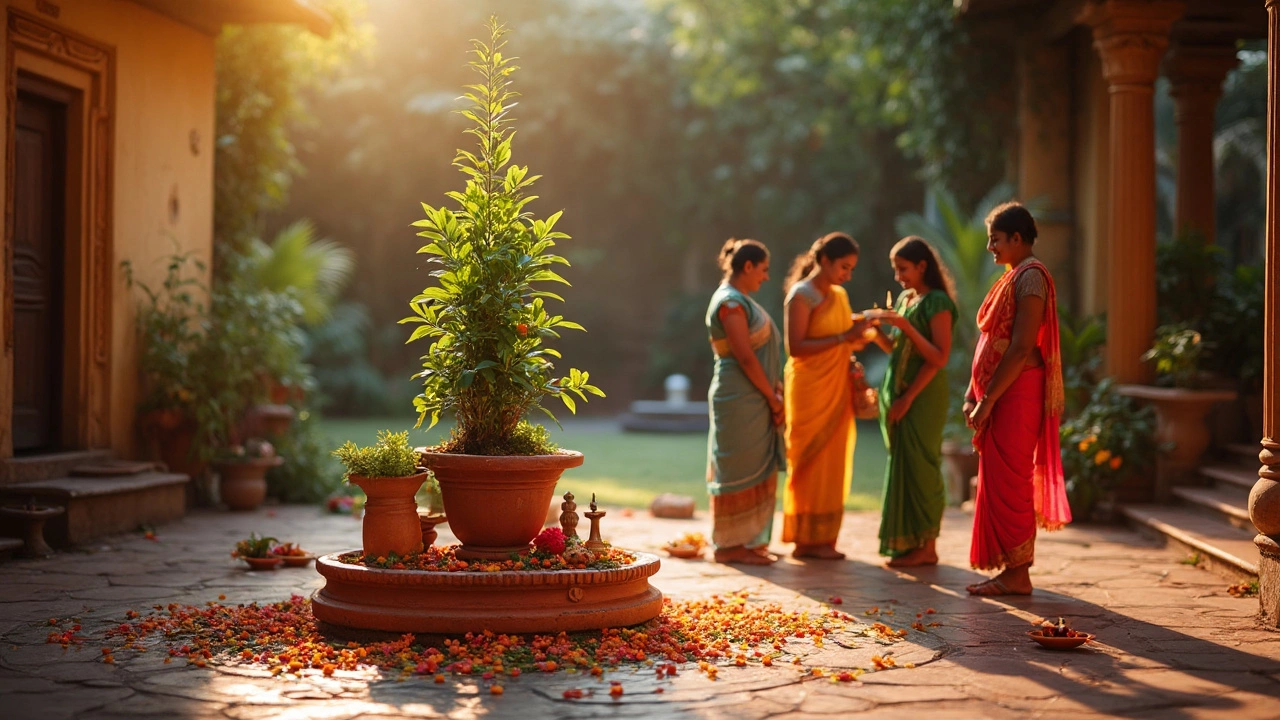Hindu Gardening: Traditional Wisdom for Today’s Indian Garden
If you’ve ever wondered why many Indian homes have a specific spot for a tulsi plant or why certain trees are planted during festivals, you’re about to get the answers. Hindu gardening isn’t just about aesthetics; it’s a blend of spirituality, climate‑smart choices, and simple practices that keep gardens healthy.
Auspicious Plants and Their Benefits
Plants like tulsi (holy basil), neem, and marigold are more than decorative – they’re considered sacred and bring real benefits. Tulsi repels insects, improves air quality, and is easy to grow in pots or garden beds. Neem leaves act as a natural pesticide, while marigold’s bright flowers attract pollinators and deter nematodes. Planting these species in the right season (usually after the first monsoon) aligns with Vedic timing and boosts garden resilience.
Timing, Placement, and Simple Rituals
In Hindu tradition, the direction a garden faces matters. A north‑east orientation is said to invite positive energy, so try to place water features or a small altar there. The best planting dates often follow the lunar calendar – the day of “Pushya” is ideal for leafy greens, while “Kartik” favors root crops. Simple rituals, like sprinkling a few drops of Ganga water on saplings, can become a calming routine and remind you to check soil moisture regularly.
Another easy habit is to chant a short mantra while watering. It not only creates a mindful moment but also helps you stay consistent with watering schedules – a key factor for plants like mango or citrus that thrive on steady moisture.
Many Hindu households also practice “pradakshina” (walking clockwise) around the garden each morning. This movement encourages you to inspect every corner, catch pest problems early, and enjoy the fresh air. You’ll be surprised how much healthier the garden looks after a few weeks of this quick walk.
Now, let’s tie these traditions to modern techniques you’ll find on our site. For example, our post on How Deep Should Drip Irrigation Lines Be Buried? explains how to lay drip lines just below the soil surface, which works perfectly under tulsi pots without disturbing the roots. Similarly, the guide on Alternative Pest Control shows how neem leaf extracts can replace chemical sprays – a natural extension of the neem tree’s own pesticidal properties.
If you have limited space, the balcony garden ideas in our tag also respect Hindu principles. Position the balcony to catch the early morning sun, place a small tulsi in a decorative pot, and add marigold flowers for color and pest control. This setup not only looks good but also keeps the energy flow positive.
Finally, remember that sustainability is at the heart of Hindu gardening. Compost kitchen waste, use rainwater harvesting, and rotate crops based on seasonal festivals. These practices reduce waste and honor the belief that earth should be cared for, not exploited.
By combining age‑old wisdom with today’s smart gardening tools, you’ll create a space that’s vibrant, productive, and spiritually uplifting. Start small – plant a tulsi, set up a drip line, and chant while you water. Watch how the garden transforms, and you’ll feel the harmony that Hindu gardening promises.
Sacred Plant in India: Why Tulsi Rules Flower Gardens
Tulsi, also called holy basil, is the most sacred plant in India and has a huge impact on gardening, health, and culture. This article explains why Tulsi is so special, from its religious ties to its powerful health perks. You'll get practical tips on growing Tulsi in your own garden and hear about fascinating legends that make this plant stand out. Anyone interested in flower gardening in India will find out exactly why Tulsi deserves a spotlight.
About
Flower Gardening
Latest Posts


How to Waterproof Your Terrace Roof: Essential Tips
By Alden Thorne Apr 11, 2025

How Many Acres of Rice Are Needed to Feed One Person?
By Alden Thorne Oct 28, 2025

Planting Vegetables: Choosing Between Pots and Ground for Optimal Growth
By Alden Thorne Dec 5, 2024

